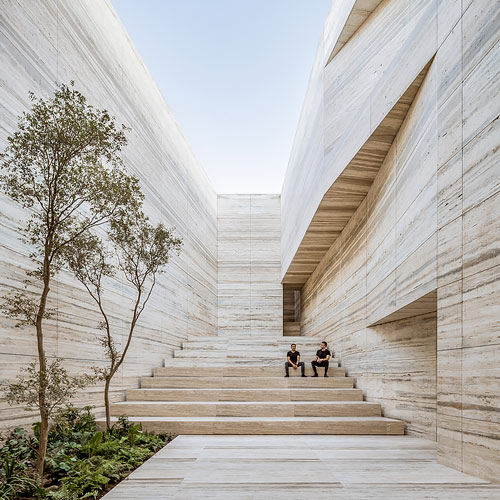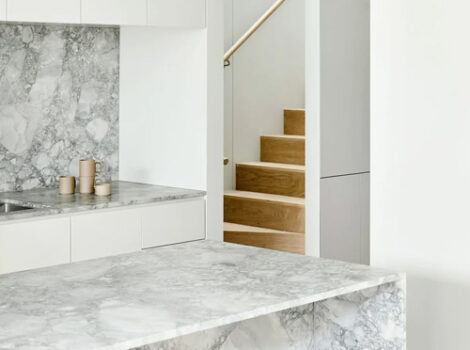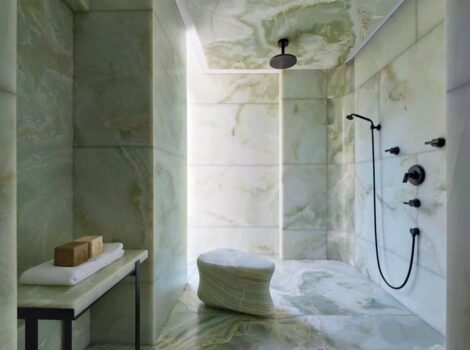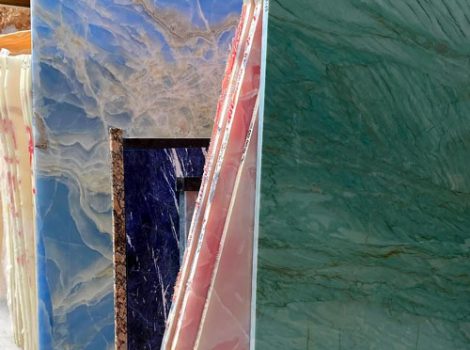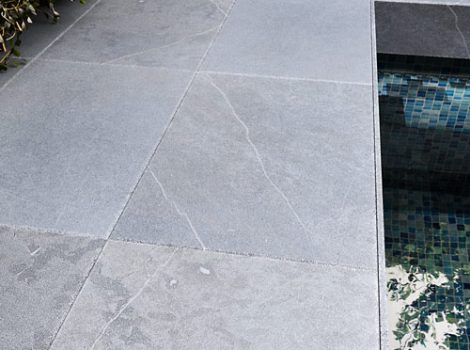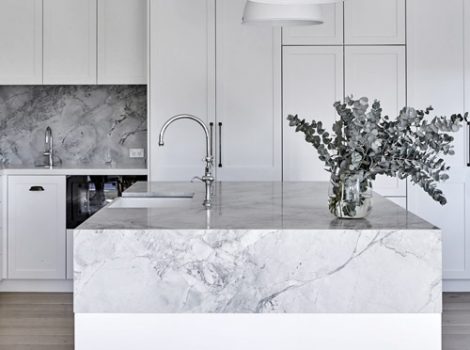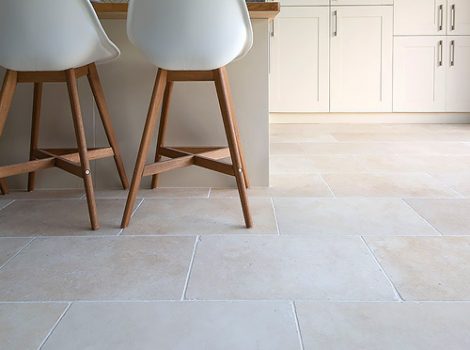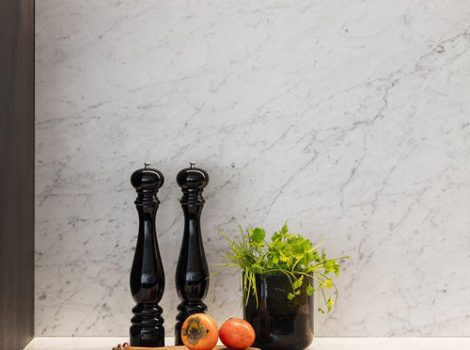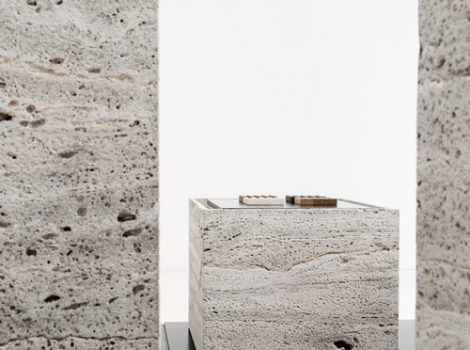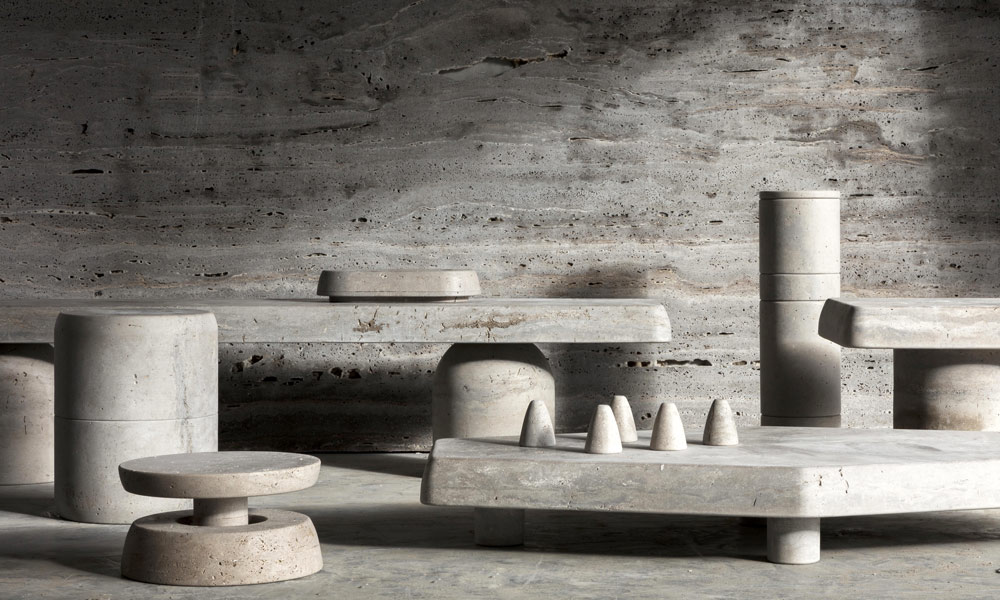
Travertine Stone is an especially attractive form of limestone. Its fibrous, marble-like texture and attractive earth-tone colors make it one of the most popular stones used for building materials. The key difference between Travertine and other natural stones lies in the formation of the rock, the hardness of the stone, and its appearance. Travertine is formed in hot springs and/or limestone caves. Travertine is not the same as Marble or Limestone which falls in the metamorphic rock category. Historically, much of the travertine used in architecture and artwork came from the mountains of Italy, but today, most of the travertine sold is from Turkey, Iran, Mexico, and Peru.
What is The Travertine Stone Quarry?
A travertine quarry is nothing more than a mine for Travertine stone. Most quarries are huge and look like open large pits. Travertine rocks are dug up in quarries and broken down into travertine blocks which are then transported to factories for cutting. After cutting the blocks into slabs, tiles, pavers, mosaics, etc. the proper Travertine finish is applied.
How is Travertine Stone imported into Australia?
Most of the Travertine found in Australia comes directly with ships from Turkey in the form of containers. Many ocean freight services transport this material across the ocean. It takes the ships approx. 8 weeks to arrive from Turkey. Most % of the Travertine containers arrive at the Port of Sydney and Melbourne. Next, they are distributed from the port to several different warehouses and wholesalers via freight forwarders.
What is the difference between premium grade travertine, commercial grade, or A grade?
The grade of travertine is most of the time determined based on the holes within the stone. Holes within Travertine stone are part of the stone’s nature and criteria. Within the travertine industry today, the rule of thumb is… the fewer holes there are within travertine stone, the higher the quality. Travertine pavers with barely any holes in them are considered A Grade or Premium Grade quality while a porous stone with a lot of holes in it (looking like a sponge) is considered commercial quality. Price differences apply. Also, keep in mind that there are Travertine tiles that come with a honed and filled finish. A filled travertine finish indicates that the holes were filled. Since the filling is always the same color throughout the tile it is fairly easy to tell apart the filling. In these cases, the difference between Premium Grade and Commercial Grade lies in the amount of filling used. A honed and filled travertine tile with a whole lot of filling is considered of lower quality compared to a tile with minimal filling.
What is the difference between Travertine Tiles and Travertine Pavers?
Travertine Tiles are used for indoor projects such as floors and walls while Travertine pavers are primarily used for outdoors such as driveways, pool decks, patio areas walkways, and landscaping. Travertine tiles are normally 10mm to 15mm thick while the standard thickness for Travertine pavers is 12 to 30mm.
What is a Travertine French Pattern Set?
A Travertine French Pattern set covers exactly 8 sqft and consists of the following pieces. One piece 600 x 400 mm, 2 pieces 400x400mm, 1 piece 400x200mm and 2 pieces 200x200mm. The French pattern set is often referred to as the Versailles Pattern or Leonardo Pattern and exists for Tiles and Pavers.
Which colors do Travertine Tiles, Pavers, Mosaics, etc. come in?
Some of the most popular colors are Ivory, Beige, Walnut colors (light, medium, dark), Noce (Dark brown), Silver, Red, Yellow, and Gold. Combinations of these colors are also possible. Color variations and color name variations are quite common within the Travertine industry i.e. Cream, Titanium, Chocolate, and Cappuccino travertine.
What finish is applied to Travertine Products?
Travertine Stone products usually have the following finishes: Tumbled, Honed, Brushed, Filled, Unfilled, Chiseled, Bush Hammered, Polished, and Sawn Cut.
Chiseled Travertine refers to the edges while all the other finishes refer to the actual surface. Combinations are also possible such as Chiseled & Honed, Chiseled & Brushed or Honed & Filled & Chiseled.
What is a Travertine Bullnose?
Travertine bullnose refers to a specific finish used in Travertine Pool Coping, where one edge of the stone is smoothly rounded for a refined look. This design is ideal for creating a soft edge around pools, ensuring safety and a polished appearance. Incorporating travertine bullnose coping into your outdoor space not only enhances the aesthetic but also provides durability, making it a popular choice for pool areas. Explore more at www.pietragallery.com.au to find the
What are the most popular patterns for Travertine Mosaics?
Travertine Mosaics come in all kinds of sizes and all kinds of color and shape variations. There are no standards when it comes to Mosaics. Mosaics can be created in almost any size. Some of the most popular mosaic patterns are Regular (square), Spiral, Herringbone, and Chevron.
What Travertine Floor Tile sizes are most popular in Australia?
The most popular sizes for indoor Travertine Tiles are French Pattern, 300x300mm, 400X400mm, and 600×600, 300×600, 600×400, and 800x400mm travertine tiles are also gaining popularity among Australian homes. Some people even use travertine tiles for pool decks to cut down on the material cost, since tiles are usually cheaper than pavers.
What is the difference between Cross Cut and Vein Cut Travertine?
Most of the travertine that you see online or displayed throughout retail locations such as flooring companies, pool builders, home improvement companies, etc. is by default cross-cut. This refers to the default way of cutting the travertine blocks which are extracted from the quarry. To produce vein-cut travertine, the travertine blocks are rotated and the cuts take place across the vein. Always think of it as cutting a tree. You can cut a tree vertically or horizontally. If you cut it vertically, the veins come out, same with Travertine.
What is a Travertine Remodeling Coping?
Travertine Remodeling Copings can be placed on top of existing pool copings as opposed to having to remove your current pool copings while remodeling your pool. Using remodeling pool copings can be more cost-effective during your pool remodeling process but the drawback is that you can only remodel once. Should you decide to remodel again, obviously you’d have to remove the existing remodeling copings. In other words, you can not place a remodeling coping on top of another remodeling coping.
What size does a Travertine Pool Remodeling Coping come in?
The most popular sizes for Pool Remodeling Copings are 4x9x4 and 12x12x4.
What size Travertine Pool Copings are on the market?
The most popular Pool Copings come in sizes: French pattern, 400x600mm, 600x600mm, and 800x400mm. Most Copings have a tumbled finish while some have a honed finish. Coping is the same thickness as travertine pavers: The most popular thicknesses for Pool Copings are 12mm, 15mm, 20mm, and 30mm thick are available as well. Further, any travertine paver can be turned into Travertine coping using a coping machine. Pavers are fed into the coping machine which creates a paver with a round side. A travertine paver with one round side is also referred to as a Single Bullnose Coping while pavers with both sides rounded off are called Double Bullnose Coping.
What are the most popular uses of Travertine?
History teaches us that there are no limits when it comes to the usage of Travertine stone. Even before Christ, Travertine used to be among the top building stones in Ancient Greece and Rome. Romans took advantage of Travertine for various construction projects such as buildings and temples, baths, stairs, steps, and amphitheaters such as the Colosseum, the largest building in the world constructed mostly of travertine. Travertine was also used for sculptures and monuments. Even today, Travertine stone is being used for a huge variety of indoor and outdoor projects. There are no exact design guidelines when it comes to travertine. It can be used practically anywhere to enhance any area. The most popular uses in Australia include but are not limited to the following.
Most common indoor travertine stone slab usage in Australia:
Floors and Walls, Stairs & Steps, Bathroom & Shower, Countertops & Backsplashes, Travertine Sinks, Fireplaces and Indoor Split Face Walls.
Most common outdoor travertine usage in Australia:
Pool Decks, Pool Steps, Driveways, Patios, Walkways, Outdoor Fireplaces, House Walls and Outside Stairs.
Can Travertine be used outdoors in ice-cold, freezing temperatures?
Yes, it can be but it’s not necessarily recommended. Due to the nature of travertine, the holes in the stone are likely to absorb water that freezes during ice-cold temperatures and is likely to cause the pavers to crack. Paver installers tend to grout porous pavers and recommend premium-grade material to avoid most of these possible cracks.
What is the best way to get Travertine delivered to my home?
Due to the weight of the material, Travertine is delivered with semis and flatbeds. The best way to have Travertine delivered is with a flatbed truck that has a forklift in the back. This is referred to as a Piggyback or Moffett. This has the advantage of being able to maneuver around the pallets or crates anywhere around your premises and place the material as close as possible to your job site.
If you are building a pool deck in the back of your home, the delivery companies can place the pallets or crates right next to your pool deck by using the forklift as opposed to curbside delivery which could be achieved with a truck that has a liftgate.
If you require long-distance delivery (states outside of Melbourne), the most cost-effective solution is to have your order delivered to a business location that has a loading dock and a forklift on the premises. Business-to-business deliveries are more affordable than Business Residence deliveries. Further, if you can unload yourself as opposed to requiring a truck with a liftgate or a Flatbed with a Forklift (you can – most of the time – save significant transportation costs as well.
How often does Travertine need to be sealed?
The best time to seal Travertine tiles is of course when they are first laid. However, this is not always possible; therefore, thorough cleaning of the stone surface with a low-pH cleaner is essential before sealing the surface. We believe the best sealant choice is the use of an Impregnator sealer that helps protect the tile against the ingress of water and oil-based stains while maintaining the natural look of the Travertine tile.
Sure Seal Sealants Australia, with over 35 years in the protective coating industry, recommends its Sure Seal® 24/7 Stone Impregnator suitable for both indoor and outdoor use. This water-based impregnator is a non-flammable, environmentally friendly, no-odor, penetrating sealer that provides extraordinary protection from water and oil-based stains. It is easy to apply and there is no need to worry about wiping off any excess product. This impregnator is very popular because of its long-lasting durability, ease of application, and maintenance of the treated surface. Sure Seal® 24/7 Stone Impregnator has a proven track record of performance not only in Australia but in major resorts in the South Pacific, Europe, and the United States.
Sure Seal® 24/7 Stone Impregnator is recommended for application on Travertine tiles around swimming pools as it not only provides protection from oil and water-based stains but also resists both chlorine and saltwater penetration. It will not change the color or texture of the treated surface. Therefore, the treated surface will not become slippery preventing the possibility of a slip-and-fall accident. Maintenance of the treated surface is quite easy. Use a low Ph cleaner (no acid-based detergents, cleansers, or abrasive products), apply with a microfibre sponge or mop with warm water, and rinse thoroughly. Sure Seal® 24/7 Stone Impregnator will last for many years, but in heavy walkway areas, we recommend that you test yearly and re-apply if necessary.
After you have purchased your beautiful Travertine tiles and Sure Seal® 24/7 Impregnator from Tile Pietra Gallery, if you need any further assistance for your Sure Seal Sealants, please call Sure Seal on their Australia-wide toll-free number 1 800 33 66 00 or google Sure Seal.
What is Travertine Split Face?
Travertine Split Face has a rough surface and usually comes in a free length size in boxes of 5.5 sqft with an assortment of 4 different sizes: 4×4, 4×8, 4×12, 4×16. Free length split face is as thick as a travertine paver and finds its main usage on outdoor walls. Splitface though can be used indoors and outdoors. Some interior designers prefer to apply split face layers in between wall tiles to create additional contrast. Split face mosaics are available as well in sizes 1×1, 1×2, 2×4, and various colors such as ivory, noche, gold, silver, scabs, multi-color, etc.
What is a Travertine slab?
Travertine slabs refer to large pieces of Travertine which are i.e. custom cut with CNC machines to produce countertops. Travertine slabs are usually 2-5 cm thick. The width of a slab is up to 67″, and the length of a travertine slab is up to 115″. Travertine slabs are usually exported by the bundle. Travertine-slabs



